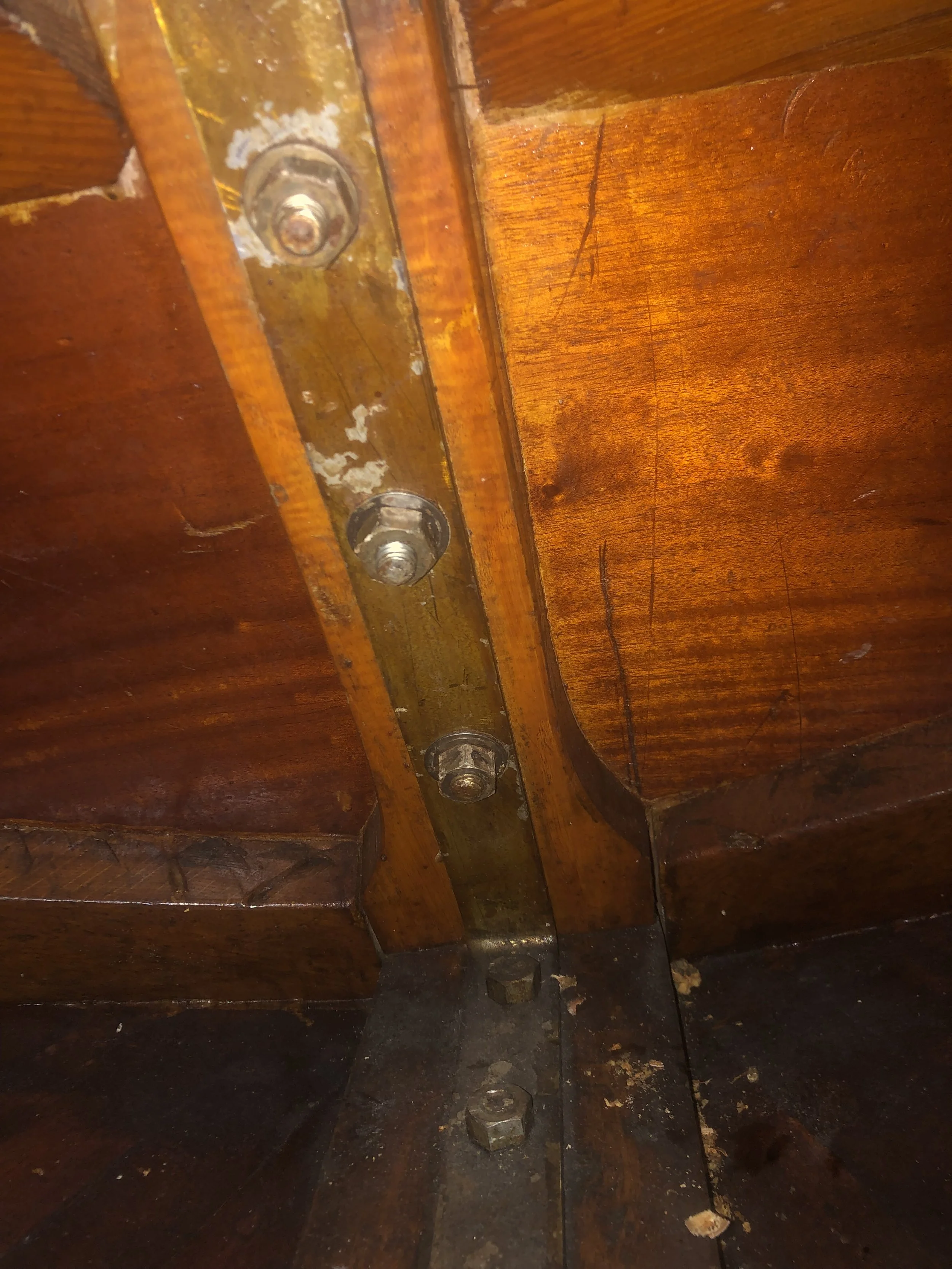Prospect of Whitby 1964
Prospect of Whitby 1964
Designer: Sparkman & Stephens
Builder: Bjarne Aas, Norway
Much like the story of Hope, this is a story of a boat with pedigree. Years ago, Steve White was approached by the owner of a boat he had owned for many years and sailed extensively in the Caribbean and along the eastern seaboard. As he aged, the boat was being used less and less and was moth-balled. With no one interested in the boat at the time, Steve agreed to take possession of the boat and put her in proper covered storage where she now sits, awaiting her next chapter.
Prospect of Whitby’s origin begins in the 1950’s with an Englishman named Arthur Slater, a rally car driver with a fierce and competitive spirit. In a wreck at the Monte Carlo, Slater lost his leg and had to rethink his passion for racing. He decided to continue racing but switched to a sport that would allow him to race in his new condition; he landed on sailboat racing. He approached Sparkman and Stephens in 1964 since they were the day's most competitive design office, and he asked them to design a racing yacht that could compete for the Admiral’s Cup. The Admiral's Cup was considered the unofficial world championship of offshore yacht racing at the time and had been for many years. Starting in 1957, it took place every other year and was held in Cowes on the Isle of Wight off southern England.
Arthur Slater was striving for the best, so he then approached world-renowned designer and builder Bjarne Aas of Fredrikstad, Norway to build the boat. Prospect of Whitby was constructed of the finest materials of her day: double-planked over oak frames and copper-riveted. She has always been varnished showing off her full-length mahogany planking on her topsides. Everything about her speaks of quality and purpose; she is a real testament to this strong and beautiful classic style of boat construction.
Prospect of Whitby is named after one of the oldest pubs in London, and she campaigned for the Admirals Cup in 1967 where she was defeated by the Australians in their new rise to the sport of offshore racing. Following his defeat, Arthur Slater went on to build five more yachts designed by Sparkman and Stephens (one boat every two years to compete for the cup). These were made of steel and aluminum, three of which were built at Royal Huisman between 1971 and 1975. All campaigned extensively, winning not only the Admiral's Cup in 1971 but also the Onion Patch and the Southern Cross Series. All of Slater’s boats were named (you guessed it) Prospect of Whitby.
So what about Prospect of Whitby #1?
She sits as a time capsule. She is in a shed with a dirt floor, an ideal environment for a double-planked boat. Her exterior finish is deteriorated but original. Her lovely full-length mahogany planking has checked over the years from drying out and splined, but she still has the clear varnish finish inside and out with which she was launched. She looks to be as original as when she was built. Let’s not forget that her builder, Bjarne Aas, was a legend at the end of his career. By 1965, he had some 600 designs completed, including Olympic gold medal-winning six meters, some fourteen life rescue boats (the first called Bishop Hvoslef), and the still famous International One Design IOD knockabouts. Aas was beloved by his country as a yacht designer, engineer, and shipwright, and it is no wonder that when Slater was seeking the highest level of offshore yacht racing, he went to Fredrikstad, Norway, to find Aas and have her built.
Currently, she is without her mast and standing rigging and needs a new engine. Looking at the layout, it is clear it was designed for Slater who never sailed wearing his prosthetic leg. He refused to wear it aboard; furthermore, he promised any guest aboard the boat who offered to help him, no matter what the weather conditions, they’d never step aboard his boat again. He meant what he said, too! He typically had a bucket swivel seat that would be fixed to the cockpit floor. You can see in the photographs that her pedestal has two steering wheels, one inside another. The second wheel was connected to a trim tab on the trailing edge of an otherwise very sleek fin, though it has since been removed. The hull was cut away to form a skeg and hang a spade rudder aft of it. In my mind, it would be great to cut the skeg away altogether and put a modern carbon spade rudder with a proper foil section and get on with it, but I will leave potential improvements for another conversation.
It is amazing to find (and preserve) such historical artifacts especially one that was built for a purpose and then came to life through the collaboration of the leading people in their field, in their day. Prospect of Whitby is certainly a boat with much more history yet to come. She just needs to find her new owner.
To watch a 1967 documentary featuring Prospect of Whitby in the Admiral’s Cup, click here.
To inquire about restoring or purchasing Prospect of Whitby, contact Eric Blake at eblake@brooklinboatyard.com.
















































